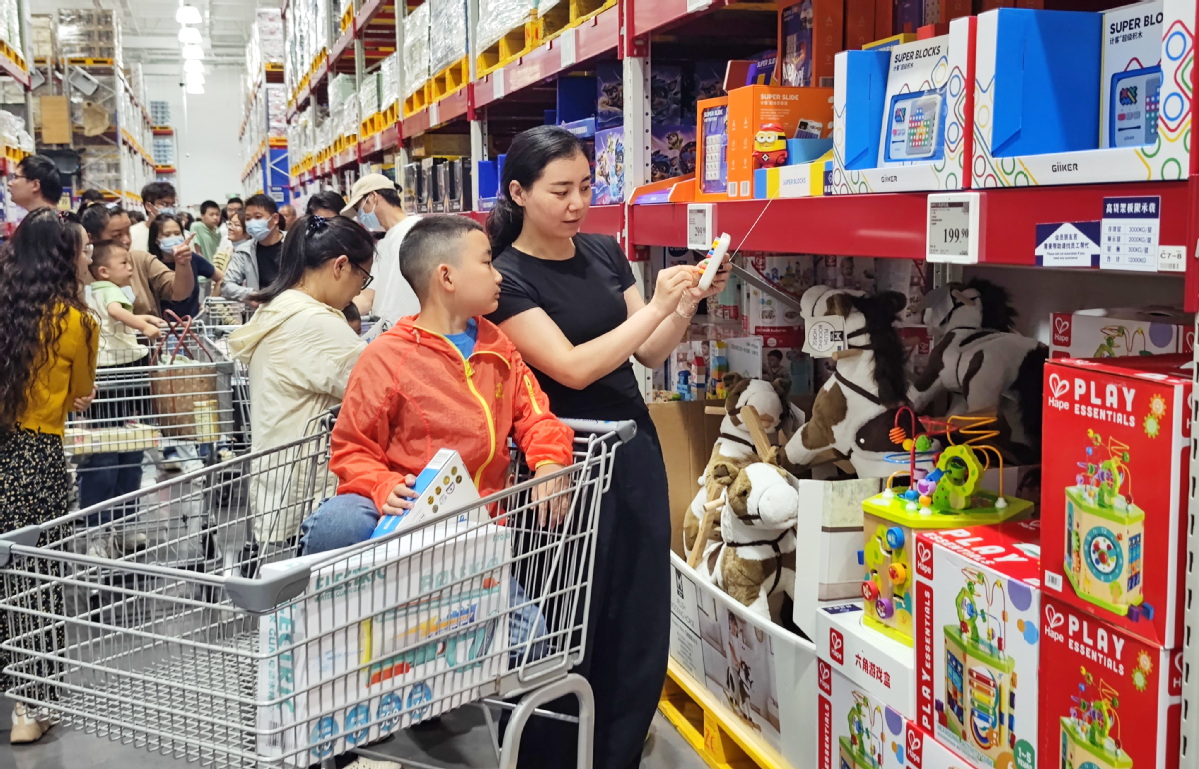Supermarket chains on recovery track as major players post uptick in sales


China's top 100 supermarket chains recorded sales of 900 billion yuan ($125.38 billion) in 2024, up 0.3 percent year-on-year, with the total number of stores reaching 25,200, according to the latest report by the China Chain Store and Franchise Association (CCFA).
China's supermarket sector is showing signs of recovery, with membership-based and discount formats emerging as key drivers of growth, the "2024 China Supermarket Top 100" report showed on Wednesday.
The annual report found that 42 companies reported year-on-year sales growth, while 25 expanded their store footprint. Notably, 14 companies managed to grow both their revenue as well as store numbers — a sign of resilience amid shifting consumer habits and cost pressures.
Store-level operations have shown measurable improvement across the sector. According to the report, over 60 percent of the top 100 chains on the list experienced better store performance in 2024, aided by restructuring efforts, digitalization, and format innovation.
Mid-sized chains with annual sales of between 3 billion yuan and 10 billion yuan were particularly successful, recording the highest percentage of operational improvement, the report said.
Walmart China once again topped the rankings with 158.8 billion yuan in sales, driven by the continued expansion of its Sam's Club membership format and a strong push into omnichannel retail.
Since 2021, Walmart has recorded double-digit growth in net sales, with online channels now accounting for nearly half of its revenue. The US retail giant has focused on renovating stores, upgrading merchandise offerings and introducing new formats tailored to medium-sized and community-based needs.
In the first quarter of this year, Walmart China posted net sales of $6.7 billion, up 22.5 percent from a year earlier. Comparable sales rose 16.8 percent, while e-commerce net sales jumped 34 percent. Sam's Club added seven new locations over the past 12 months nationwide, underscoring the brand's growing appeal among Chinese urban consumers.
On CCFA's list, RT-Mart Investment (China) Co Ltd, which operates RT-Mart, RT-Mart Super and M Club stores, ranked second.
Alibaba's retail platform Freshippo came in third. Other strong performers included Costco, Hotmaxx, ALDI, and Yaodi Farming — all of which reported robust sales growth tied to their membership or value-oriented positioning.
For example, Wumart Group introduced 3,000 new products under one of its sales promotion initiatives last year, leading to an average price drop of 20 percent. The company also launched a "supermarket + large canteen" model in major cities like Beijing and Tianjin, with some locations seeing daily customer traffic exceeding 3,000.
The report found that e-commerce has continued its upward trajectory, with online channels accounting for 16.9 percent of total sales among the top 100 chains, up from previous years. Operators increasingly relied on "front warehouse" models — small, strategically located distribution hubs — to fulfill online orders quickly and efficiently, especially in major cities.
This trend has blurred the lines between physical and digital retail, pushing traditional supermarket chains to accelerate their online integration and last-mile delivery capabilities.
"Data in recent years show that physical retail has entered a stage of saturated competition — growth driven purely by store expansion is no longer sustainable," said Pei Liang, chief researcher at the CCFA Research Institute.
"To maintain momentum in this new phase, retailers must focus on improving store productivity and efficiency through transformation and innovation, while enhancing product differentiation and cost-effectiveness by reshaping procurement and operational models."
The report also points to a growing concentration of market power among the largest players. The top 10 supermarket chains accounted for 66.6 percent of total sales in 2024, a figure that has risen steadily over the past few years.




































